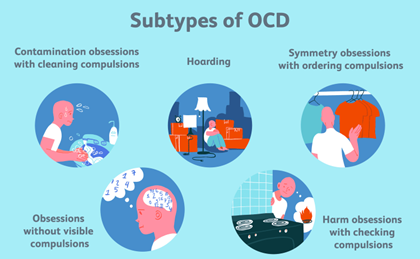A registered nurse in a mental health facility is planning care for a client who has obsessive-compulsive disorder (OCD) and is newly admitted to the unit. Which of the following actions should the nurse plan to take regarding the client's compulsive behaviors?
Confront the client about the senseless nature of repetitive behaviors.
Isolate the client for a period of time.
Plan the client's schedule to allow time for rituals.
Set very strict limits on the behaviors so that the client can conform to the unit rules and schedules.
The Correct Answer is C
When caring for a client with obsessive-compulsive disorder (OCD), it is important for the nurse to understand that the client’s compulsive behaviors are a way for them to manage their anxiety and distress. Rather than trying to confront or eliminate these behaviors, the nurse should work with the client to develop a schedule that allows time for their rituals while also incorporating other activities and treatments.
Option a. Confront the client about the senseless nature of repetitive behaviors is not a helpful intervention because it may increase the client’s anxiety and distress.
Option b. Isolate the client for a period of time is not a helpful intervention because it does not address the underlying causes of the client’s compulsive behaviors.
Option d. Set very strict limits on the behaviors so that the client can conform to the unit rules and schedules is not a helpful intervention because it may increase the client’s anxiety and distress and may interfere with their ability to participate in treatment.

Nursing Test Bank
Naxlex Comprehensive Predictor Exams
Related Questions
Correct Answer is A
Explanation
Chronic anxiety is a persistent feeling of unease, worry, or fear that can interfere with daily life. To manage chronic anxiety, the client needs to identify anxiety-producing situations that trigger their symptoms. This can help the client avoid or cope better with these situations. It is important to note that it is not always possible to eliminate stress and anxiety from daily life, so it is better to focus on managing it effectively.
Trying to repress feelings of anxiety is not a helpful strategy and can make the client's symptoms worse in the long run. Repressing emotions can lead to feelings of frustration, irritability, and even physical symptoms such as headaches or muscle tension.
Contacting the crisis counselor once a week may be helpful for some clients, but it is not a standard recommendation for all clients with chronic anxiety. The discharge plan should include personalized recommendations that are tailored to the client's specific needs and circumstances.

Correct Answer is B
Explanation
Disulfiram is a medication used in the treatment of alcohol addiction. It works by causing unpleasant symptoms, such as nausea and vomiting, when alcohol is consumed. This medication is only effective if the client abstains from alcohol consumption while taking it. If the client consumes alcohol while taking disulfiram, they will experience severe adverse effects, including nausea and vomiting, which can be a sign of a severe reaction. Therefore, it is crucial for the nurse to suspect that the client's distress is likely caused by consuming alcohol while taking disulfiram.
Option a is incorrect because nausea and vomiting are not common side effects of disulfiram.
Option c is incorrect because the question does not provide any information suggesting an allergic reaction.
Option d is incorrect because an overdose of disulfiram would not likely cause nausea and vomiting as severe as those reported by the client.

Whether you are a student looking to ace your exams or a practicing nurse seeking to enhance your expertise , our nursing education contents will empower you with the confidence and competence to make a difference in the lives of patients and become a respected leader in the healthcare field.
Visit Naxlex, invest in your future and unlock endless possibilities with our unparalleled nursing education contents today
Report Wrong Answer on the Current Question
Do you disagree with the answer? If yes, what is your expected answer? Explain.
Kindly be descriptive with the issue you are facing.
